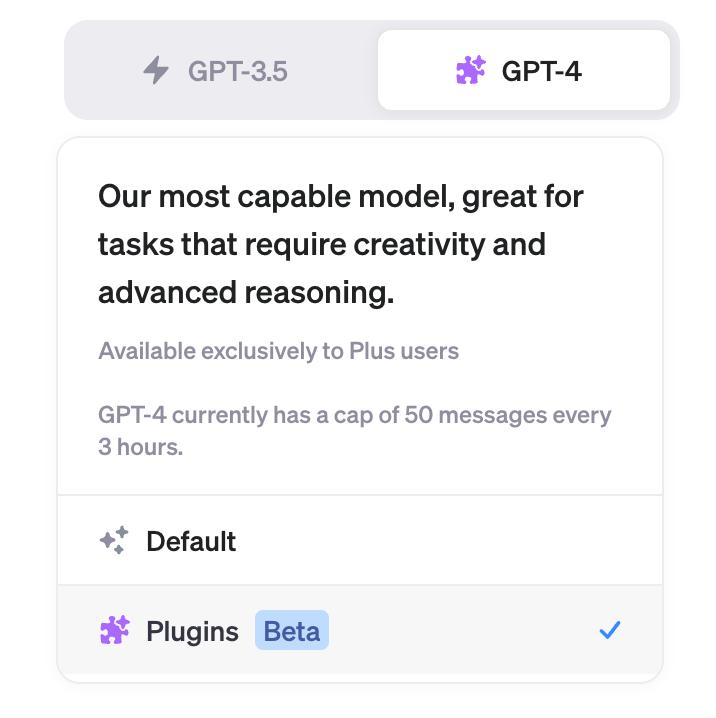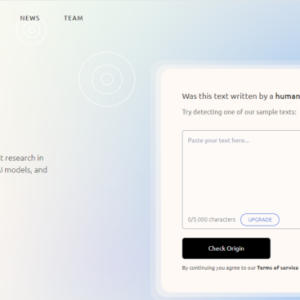When it comes to AI language models, OpenAI’s ChatGPT has been one of the most widely used and popular options. However, with the recent release of OpenAI’s new language model called Bard, we now have a compelling alternative that offers even more advanced capabilities. Bard presents an exciting shift in AI technology, providing enhanced natural language understanding, improved context retention, and the ability to generate more coherent and creative responses. In this article, we will explore why Bard is emerging as our new choice for AI language models, and the unique features that set it apart from its predecessor, ChatGPT.
- Novel AI Review: Is This The Best AI Story Generator Around?
- AI vs Human Marketing: How to Amp Up Your Productivity
- ChatGPT for Sales: 7 Ways You Can Harness the Power of AI to Unlock New Opportunities
- ChatGPT Growth: 8 Powerful Findings From Its Meteoric Rise
- 7 ChatGPT Blog Writing Tips: Your Easy Step-by-Step Guide
Google Bard is surprising a lot of people. And it’s getting closer to being a top ChatGPT alternative.
You are viewing: ChatGPT Alternative: Why Bard Is Our New Choice
The digital marketing community has been abuzz with discussions comparing Bard and ChatGPT. While both have their merits, Bard has emerged as the preferred choice for many. Its ability to crawl recent news and provide up-to-date insights gives it a distinct advantage over ChatGPT.
We’re going to go into the reasons behind Bard’s rising popularity, why we use it more than ChatGPT, and how marketers can harness its capabilities for optimal results.
What Is ChatGPT?
ChatGPT is a large language model chatbot developed by OpenAI. It is a powerful tool that can be used for a variety of tasks, including generating text, translating languages, and writing different kinds of creative content, including marketing material.
However, like any technology, ChatGPT has its own set of benefits and limitations.
ChatGPT Benefits
- It is easy to use: With a user-friendly interface, ChatGPT allows even non-technical users to harness its capabilities. It’s great at breaking down complex ideas and summarizing or explaining them in a way that’s easy to understand. This makes it a versatile tool that can be used in a variety of industries.
- It is free to all users. There is a free version (ChatGPT-3.5), but there is also a paid version (ChatGPT-4, or -Plus) which is $20 per month and gives you access during busy times, the ability to use specific ChatGPT plugins for better productivity, and is better for tasks that require advanced reasoning.
- It can understand natural language. ChatGPT is trained on a massive dataset of text and code, which allows it to understand natural language in a way that other AI chatbots cannot. This means that it can have conversations with humans that are more natural and engaging.
- It can generate human-like text. This tool can generate text that is grammatically correct and mostly factually accurate (see limitations below). It can produce text that resembles human writing, particularly when you teach it to closely mimic your brand style and voice.
- It can be used for a variety of tasks. ChatGPT can be used for a variety of tasks, including customer service, education and marketing.
- It offers better functionality with plugins. You can access many plugins that are specifically designed to work with ChatGPT. The plugin store is for the ChatGPT-4 (Plus) version only.

- It is constantly learning and improving. ChatGPT is constantly learning and improving. This means that it is getting better at understanding natural language, generating text, and completing tasks.
- It can generate code. It can generate code (though only if it is similar to the code that it has seen before).
ChatGPT Limitations
- It does not have common sense. ChatGPT is trained on a massive dataset of text and code, but it does not have the same kind of real-world experiences that humans do. This means that it can sometimes struggle to understand the context of a conversation or to provide accurate or helpful information.
- It cannot access the internet. ChatGPT is not connected to the internet, so it cannot access real-time information or learn new things as they happen (its knowledge cut-off is September 2021). This can limit its ability to provide accurate or up-to-date information.
- It cannot produce images in its responses. ChatGPT is a text-based language AI model so it’s unable to produce or render images directly in its responses. It can generate descriptions and textual representations of images, but can’t display visual content.
- It has limited knowledge. ChatGPT is trained on a massive dataset of text and code, but it does not have the same kind of knowledge as a human being. This means that it can sometimes struggle to answer questions about complex or specialized topics.
- It is over-reliant on prompts: The quality of the output heavily depends on the quality of the prompts, requiring careful crafting and refinement.
- It can produce biased or inaccurate information. ChatGPT is trained on a massive dataset of text and code, which includes both accurate and inaccurate information. This means that it can sometimes produce biased or inaccurate information. It has also been known to make up studies (and admits to doing so when you ask for a source).
- It is not as good at understanding natural language as Google Bard. Although it can generate code, it sometimes produces code that is not well-formatted or that does not work as expected.
- It can be fooled by adversarial examples. Adversarial examples are carefully crafted inputs that can cause a machine learning model to produce incorrect outputs. ChatGPT is not immune to adversarial examples, which means that it can be fooled into producing incorrect outputs.
- It is still under development. ChatGPT is a relatively new technology, and it is still under development. This means that there are still some bugs and limitations that need to be addressed.
ChatGPT is a powerful tool with a lot of potential. It is still under development, but it has the potential to revolutionize the way we interact with computers.
What Is Google Bard?
Google Bard, commonly referred to as Bard, is an AI language model that has been gaining attention as a viable alternative to ChatGPT. Developed with a focus on providing real-time insights and more specific content generation, Bard has become a preferred choice for many content creators, especially marketers.
Let’s take a look at the benefits and limitations of Bard to understand why it’s emerging as a popular choice.
Bard Benefits
- It can access information from the real world through Google Search. This means that Google Bard can provide more comprehensive and up-to-date information than other language models that are not connected to the real world (although we’ve found that there’s often a lag of a couple days or so).
- It can include images in its responses. Bard can produce images in its responses using a technology called generative adversarial networks (GANs). To request an image, use the @img tag. For example: “What is a cat? @img”. It will also give you the source link of the image (though it sometimes gives you the wrong link):

- It can offer search marketing insights: With its ability to access info via Google Search, Bard offers valuable insights for content alignment with current trends.
- It is easy to use: Bard’s user-friendly interface makes it accessible to both technical and non-technical users, encouraging broader adoption.
- It is free to use. There is only one version and that is free for everyone to use.
- It provides multiple responses at once. It provides a “View Other Drafts” drop-down with three alternate responses, plus the ability to edit your question after you ask it rather than write a new question.

- It can generate fairly accurate code. Google Bard is better at understanding natural language than ChatGPT, so it can produce code that is more likely to be well-formatted and to work as expected.
- It is constantly learning and improving. Like ChatGPT, it continues to learn and improve its understanding of natural language and ability to generate accurate and well-written text.
- It can be used to improve customer service. Google Bard can be used to create AI chatbots that can answer customer questions, resolve issues, and provide support. This can free up human customer service representatives to focus on more complex tasks.
- It provides a quick “Google It” button. If you’d like to verify Bard’s responses, there is a “Google It” button at the end of every answer.

Bard Limitations
- It is still under development. Bard is a relatively new technology, and it is still under development. This means that there are still some bugs and limitations that need to be addressed.
- It can be biased or inaccurate. Bard is trained on a massive dataset of text and code, which includes both accurate and inaccurate information. This means that Bard can sometimes produce biased or inaccurate information, especially when it is asked about sensitive topics.
- It can be fooled by adversarial examples. Adversarial examples are carefully crafted inputs that can cause a machine learning model to produce incorrect outputs. Bard is not immune to adversarial examples, which means that it can be fooled into producing incorrect outputs.
- It can produce repetitive or unoriginal content. Bard is trained on a massive dataset of text and code, which means that it can sometimes produce repetitive or unoriginal content. This is because Bard is more likely to generate content that is similar to the content that it has seen before.
- It can be difficult to understand. Bard is a complex language model, and it can sometimes be difficult to understand its responses. This is because Bard is able to generate text that is grammatically correct and factually accurate, but it may not always be clear what Bard is trying to say.
- It cannot access the real world. Bard is an AI model, not a physical robot. This means that it cannot access the real world or interact with physical objects. This can limit its ability to understand and respond to certain types of requests.
- It is not always creative. Bard is a language model, not a creative writing tool. This means that it can be good at generating text that is grammatically correct and factually accurate, but it is not as good at generating text that is creative or original.
- It can be used for malicious purposes. Bard is a powerful AI tool, and it can be used for malicious purposes. For example, Bard could be used to generate fake news or to spread propaganda. It is important to be aware of the potential for misuse of Bard before using it.
- It is dependent on search volume: Bard’s focus on high search volume topics may limit its effectiveness in niche or specialized areas where search volume data may not be as relevant.
See more : Chatsonic Review: Great Features, But Will It Enhance Your Content?
Overall, both ChatGPT and Google Bard are powerful language model tools that can be used for a variety of tasks. However, because Google Bard is a more versatile tool that has access to a wider range of information and much more up-to-date knowledge, it is an viable ChatGPT alternative.
Here’s a quick summary to compare ChatGPT vs Bard:

The Power of Search Marketing Insights
Bard’s ability to identify popular, up-to-date search questions is a game-changer for content creators, particularly marketers. By asking specific marketing-related queries, such as keyword lists and phrases, in addition to their search volume and indexed results, you’ll get a better framework for content creation. Remember:
- Search volume indicates what people are actively looking for
- Indexed results offer a measure of how saturated or competitive a topic might be
This list can then be used to create content that is not only relevant, but has the potential to rank well in search engines.
For example, if you see that a lot of people are searching for information about a new product, you might want to create a blog post or landing page that discusses the product in detail. Or, if you see that people are searching for how-to guides, you might want to create a series of blog posts that provide step-by-step instructions on how to complete a particular task.
So I typed in “What are the most popular search marketing questions that have high search volume?” then added “How many results are indexed for each of these questions?” and asked it to make a table with the search volume numbers for each:

This is a valuable asset for content creators, as it can help them to create content that is more likely to be found and read by potential readers.
Another way Bard outshines ChatGPT is if a content creator is looking for marketing questions specific to a particular quarter (Q2, Q3, etc.), Bard can provide relevant and timely suggestions:

It can also help content creators identify the right keywords to use in their content, which can help improve their search engine ranking.
See more : ChatGPT Gets a Memory: What You Need to Know
For example, when asked to identify five long-tail keywords that are less competitive and have high search volume for the main keyword “best running shoes for women” and put the info in a table format, it came up with this:

Overall, Bard is a powerful ChatGPT alternative that can help content creators to create high-quality content that is more likely to be found and read by potential readers.
To sum up, here are some specific examples of how Bard’s search marketing insights can be used to improve your content marketing strategy:
- Identify trending topics. Bard can help you identify topics that are currently trending by showing you the most popular search queries. This information can be used to create content that is relevant to what people are currently interested in.
- Find out what your target audience is searching for. Bard can also help you find out what your target audience is searching for by showing you the most popular search queries for specific keywords. This information can be used to create content that is specifically tailored to the interests of your target audience.
- Get ideas for new content. Bard can also help you get ideas for new content by suggesting related search queries. This information can be used to find new topics to write about or to expand on existing topics.
Final Thoughts on Bard as a ChatGPT Alternative
While ChatGPT has been a popular choice for many, the AI tool’s limitations, such as its lack of real-time data crawling and potential cost considerations, have opened the door for alternatives like Bard to gain traction.
Bard’s strengths lie in its ability to provide real-time insights, explore popular search marketing questions straight from Google, and allow for more precise content generation. Its ability to generate high search volume topics with indexed results adds a layer of sophistication that aligns with the needs of digital marketing.
So the choice for us between Bard and ChatGPT is not merely a matter of preference, but a strategic decision as marketers to get the best tool for our needs. Bard’s rise as a ChatGPT alternative signifies a broader trend towards more responsive and adaptive AI tools in the content creation space.
But remember: While Bard’s data is highly relevant and up-to-date, always verify the information it provides, as it has been known to be inaccurate.
For more insights and marketing tips, visit Marketing School – Daily Marketing Tips.
That’s a wrap on “ChatGPT Alternative: Why Bard Is Our New Choice” We hope you’ve found a trove of useful insights and fresh perspectives. Your opinions and ideas matter to us—join the conversation below and share your take! Hungry for more tech insights? Dive into our diverse collection of articles where innovation meets practicality. Discover More AI Softwares.
Stay in the loop with the latest in AI and tech – your journey into the digital future continues at duanetoops.com.
#ChatGPT #Alternative #Bard #Choice
Source: https://duanetoops.com
Category: AI





